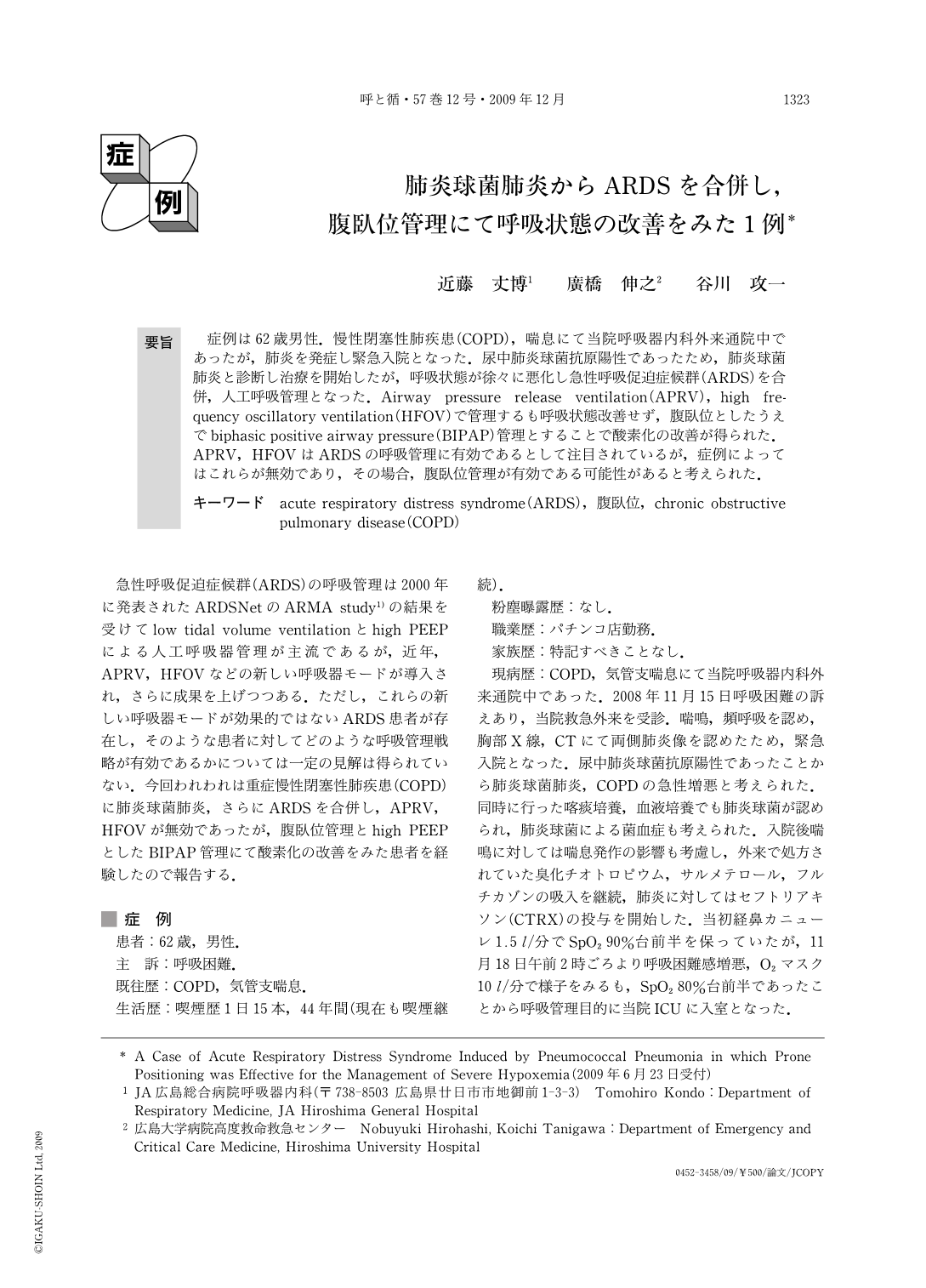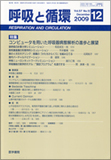Japanese
English
- 有料閲覧
- Abstract 文献概要
- 1ページ目 Look Inside
- 参考文献 Reference
要旨 症例は62歳男性.慢性閉塞性肺疾患(COPD),喘息にて当院呼吸器内科外来通院中であったが,肺炎を発症し緊急入院となった.尿中肺炎球菌抗原陽性であったため,肺炎球菌肺炎と診断し治療を開始したが,呼吸状態が徐々に悪化し急性呼吸促迫症候群(ARDS)を合併,人工呼吸管理となった.Airway pressure release ventilation(APRV),high frequency oscillatory ventilation(HFOV)で管理するも呼吸状態改善せず,腹臥位としたうえでbiphasic positive airway pressure(BIPAP)管理とすることで酸素化の改善が得られた.APRV,HFOVはARDSの呼吸管理に有効であるとして注目されているが,症例によってはこれらが無効であり,その場合,腹臥位管理が有効である可能性があると考えられた.
A 62-year-old man with chronic obstructive pulmonary disease and bronchial asthma was admitted to our hospital due to pneumonia.We diagnosed pneumoccocal pneumonia because the pneumoccocal pneumonia specific antigen in the urine was positive. Systemic administration of sensitive antibiotics remitted inflammatory response and respiratory condition, while he displayed acute respiratory distress syndrome with severe hypoxemia as dyspnea gradually progressed. Because of this, mechanical ventilation was initiated. Severe hypoxemia was unsolved by airway pressure release ventilation(APRV) and high frequency oscillatory ventilation(HFOV), so we performed prone positioning with biphasic positive airway pressure(BIPAP). His respiratory condition rapidly improved during his prone position with BIPAP. Recently, although APRV and HFOV are considered effective for ARDS, there are still some refractory ARDS cases. Prone positioning seems to be a safe and effective treatment for patients with severe ARDS who have failed to respond well to APRV and HFOV.

Copyright © 2009, Igaku-Shoin Ltd. All rights reserved.


